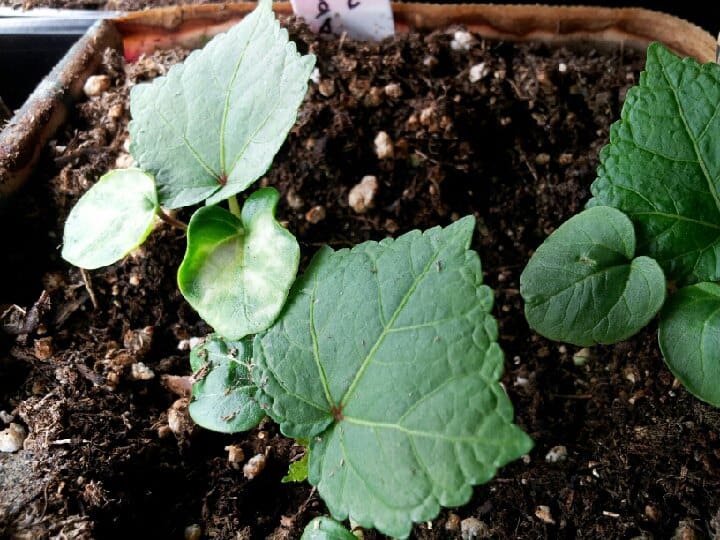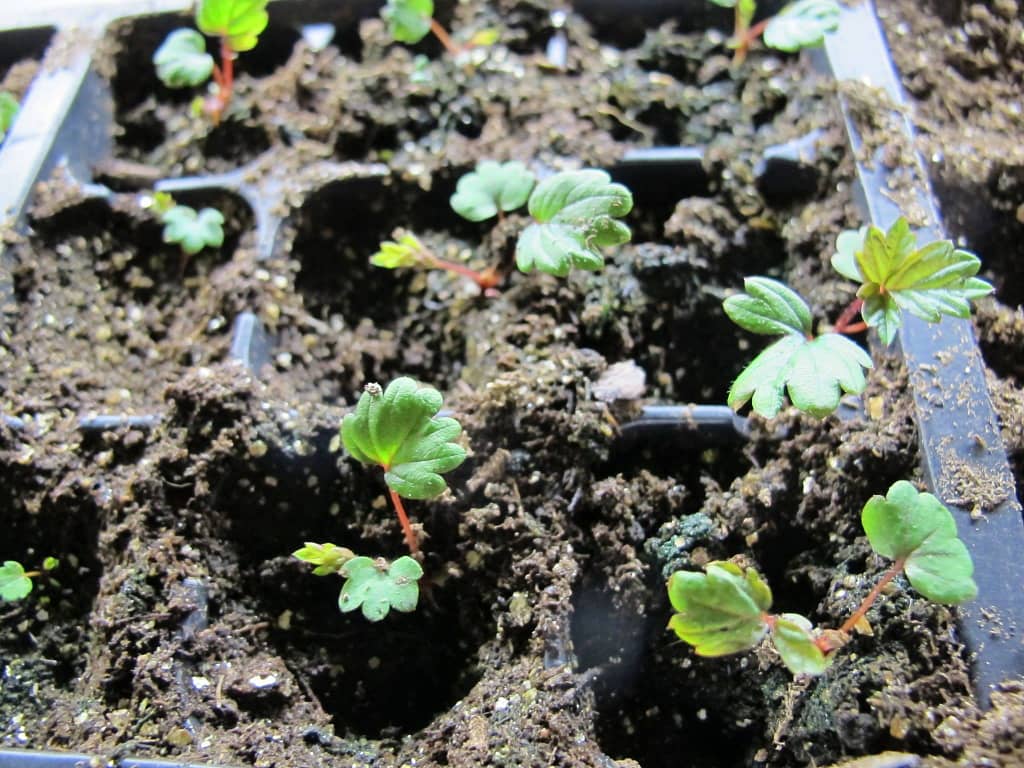You may be wondering when to start your precious seeds? Of course, seed packages have instructions such as 6-8 weeks before last frost or once the ground can be worked or even start 4 weeks early OR in situ. To better understand these directions, here’s a crash course on the whens and wheres of planting.
You’ll need a couple pieces of information
- Date of Last Frost
- Date of Workable Soil
- Category of Plant

1. Date of Last Frost – WARM soil vs SAFE from frost
First, identify your usual date of last frost. It will be easier to find the average last date of frost but depending on your geographical region this might mean that there is almost a month before the threat of frost is truly over. For example, googling tells me that the average last date of frost for Ottawa is sometime in the first two weeks of May, often May 6th. However, there are several problems with that date. First, it is for the city, not the farther flung suburbs, rural, or hilly areas. Secondly, this is a statistical average as in it is possible that last frost will happen before or after this date. The true safer date of last frost is closer to the end of May or even the beginning of June based on experience and including rural areas. Frosts get more and more scarce as the merry month of May wears on but threats of frost don’t disappear until sometimes after the first week of June. Is this a long way of saying just plant on the May 24th weekend? No! I mean, sometimes but not always. Like I said, some years, we do get frost after May 24. Besides everywhere, across Canada, you’ll hear people say that you should plant frost tender plants on the Victoria Day weekend. Sound suspicious to you? It should.
What to do? You can talk to experienced growers for some perspective. You can also take stock of your willingness to cover your plants if late frost does loom. For sake of simplicity, we’re going to add a month to the average last frost and call that your SAFE day. For Ottawa, this is approximately June 6th. You are likely going to be planting out a week or two before your safest date (depending on your exact location and the weather forecast) so sometime between the last week of May and the first week of June. If you have a greenhouse or cold frame of some sort then you’ll have to adjust based on your setup which may or may not include a heater.
2. Date of WORKABLE Soil:
This is when your soil has warmed and dried up enough that if you were to pick up a clump of dirt in your hand and squeeze, water doesn’t drip out. Also, it is not super cold to the touch and it falls apart easily in your hand. When soil is workable might vary around your yard or garden, and certainly does vary around the city and countryside depending on the amount of sunlight and snow cover you get. In Ottawa, this is around the beginning of April so about 2 months before the SAFE date. FYI, because soil warms at different rates depending on if you have sandy or clay dominant soil or where your garden is located, it may take up to a month after snow melt before you have workable soil so it may not be until sometime in May. We’re going to therefore refer to April 6th as the first probable WORKABLE day and May 6th as likely earliest day of WARM soil. Keep in mind that these are just estimates. Nature is variable. Some years there will be a high snow pack in a well treed yard with a late blizzard or below average temps and soggy low spots in the garden that mean WORKABLE day is not until May 1 and WARM day not like May 20! However, for planning, we’ll imagine that each of these three dates is about one month apart.
3. Categories of Plants
When it comes to what you are planting, you’ll need to know its preferences:
- Long or short season: Some plants need a head start because they require lots of time to grow for optimal yield but they are somewhat frost tolerant. Examples include many onion family members like leeks and long season brassicas like cabbage.
- Warm or Cool weather plants: Some plants do much better when grown in warm or cool weather such as peppers liking heat and heading broccoli liking cool (not cold) temps.
- Frost tender or hardy: Plants will vary in the amount of freezing that they can endure. Carrots and spinach can take a light freeze but tomatoes and cucumbers will be damaged by even a light frost and basil will start to do poorly as temperatures dip even close to freezing.
- Best planted in ground or best started indoors: Plants with tap roots resent transplanting so are best started in the ground like carrots and others like beans and peas are just easy to direct sow into the ground. However, many plants like tomatoes benefit from a head start (even if volunteers will often fruit later in the season).
Finally the timing! By category:
Indoors
Frost Tolerant
- 10-12 weeks before WARM soil: leek, celeriac, celery
- 8-10 weeks before WARM soil: bulb onions, cauliflower, artichoke, perennials such as herbs and strawberries
- 6-8 weeks before WARM soil: long season heading brassica for early planting: long season cabbage
- 4-6 weeks before WARM soil: kale, swiss chard, lettuce, spinach, Brussel sprouts, shorter season broccoli, cabbages including ‘Napa’ type, Florence fennel, parsley
Frost Tender
- 8-12 weeks before SAFE day: Most common peppers (8 weeks), pepper species other than annum (10-12 weeks).
- 6-8 weeks before SAFE day: eggplants, tomatoes, tomatillos, ground cherries, cucumbers, peanut, sweet potato slips, basil, okra
- 4-6 weeks before SAFE day: vining crops like melons and squash, amaranth

Outdoors
Frost Tolerant
- WORKABLE soil: peas, parsnips, radishes, arugula, mustard greens, purslane, corn salad/mache
- Between WORKABLE and WARM: direct sow cold, short season greens such as lettuce, spinach, beets, swiss chard, carrots (Succession sow these same crops for baby greens as long as they will germinate in well-watered soil every month or so). Also direct seed tap rooted herbs like fennel, dill and parsley.
- WARM day: Transplant out: leeks, celery, cabbage, cauliflower, kale, swiss chard and other frost tolerant pre-starts like lettuce. Also plant out onion set
Frost Tender
- WARM soil: You may choose to make an early ‘gambling’ sow of beans, cucumbers and other direct sow of frost tender crops, counting on warm weather and no frost to germinate and grow them but with the knowledge that you may have to re-sow if there is frost.
- 1-2 weeks to SAFE day: Direct sow beans, cucumbers, squash, and melons. Transplant out (depending on the weather forecast) tender starts that you can cover should a late frost appear. Plant out seed potatoes for an early crop.
- SAFE day: Transplant out sweet potato slips and other frost tender starts. Plant out seed potatoes from shorter season varieties as late as mid-summer to avoid pests.

A Few More Notes:
How Early?
How much space you have is important in determining if you start indoors and how early. It might be helpful, under ideal conditions, to give a big headstart. But if you only have a window sill or other constraints, it may be better in the long run to give a shorter headstart or to sow in ground if possible.
Succession Sowing:
Some short season crops, like many baby greens, can be sown more than once in a season. Keep in mind, that as sunlight hours wane and temperatures go down later in the season, it might take longer for them to reach maturity. Different seeds require different temperatures to germinate well so too high or low temperatures may constrain your planting window.
Volunteers:
Any plant that tends to sow itself can be seeded when the ground is workable, even before it has warmed up. This includes things like dill, amaranth, zinnia, cosmos, parsley, poppies and more. It would even include tomatillos and tomatoes but this may lower yields which is why they are usually given a headstart.
Stratification:
If you are sowing north American wildflowers or fruit trees or other more unusual edibles, they might need a period of cold called stratification to break dormancy. This will affect the amount of time you need to prestart them. Watch our socials and this blog for more information on special seed treatment such as this post How to Cold Stratify Seeds for Spring Planting